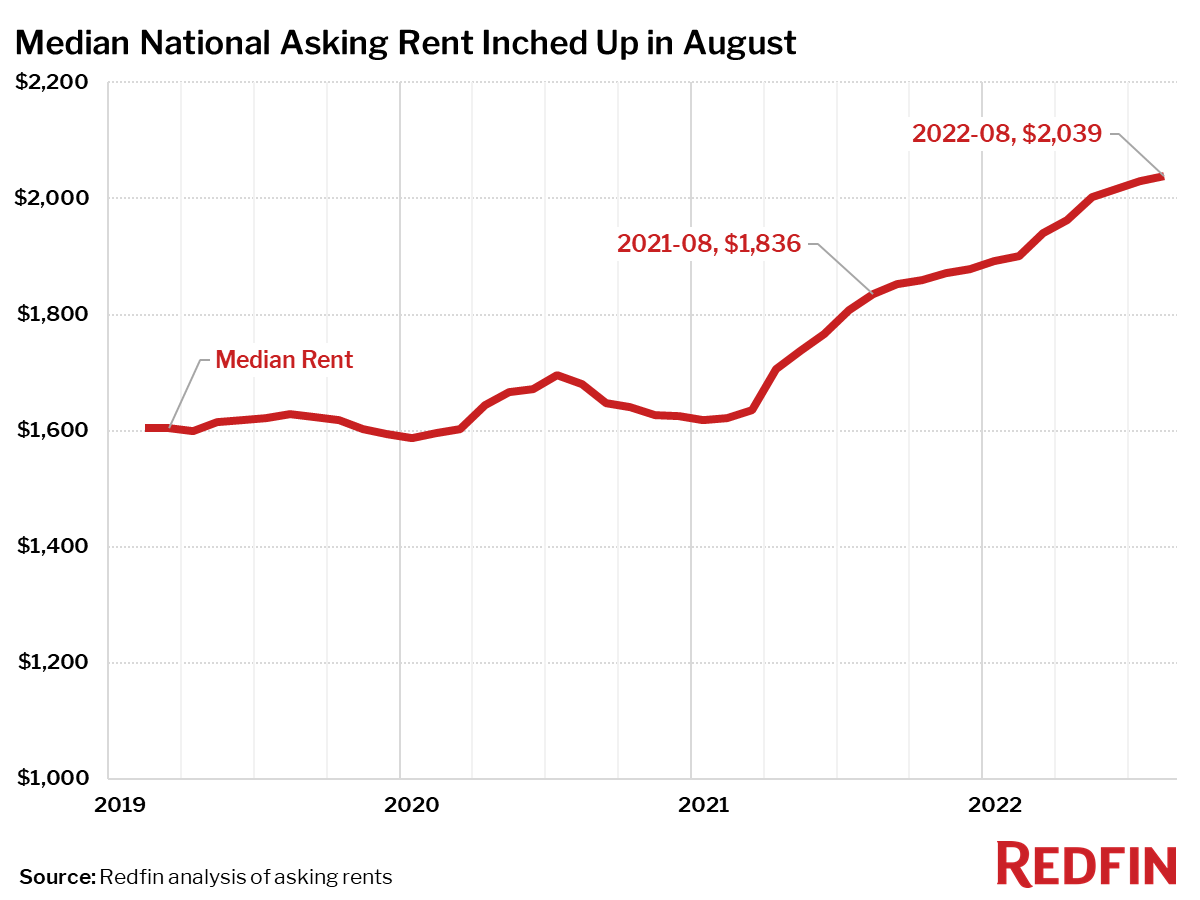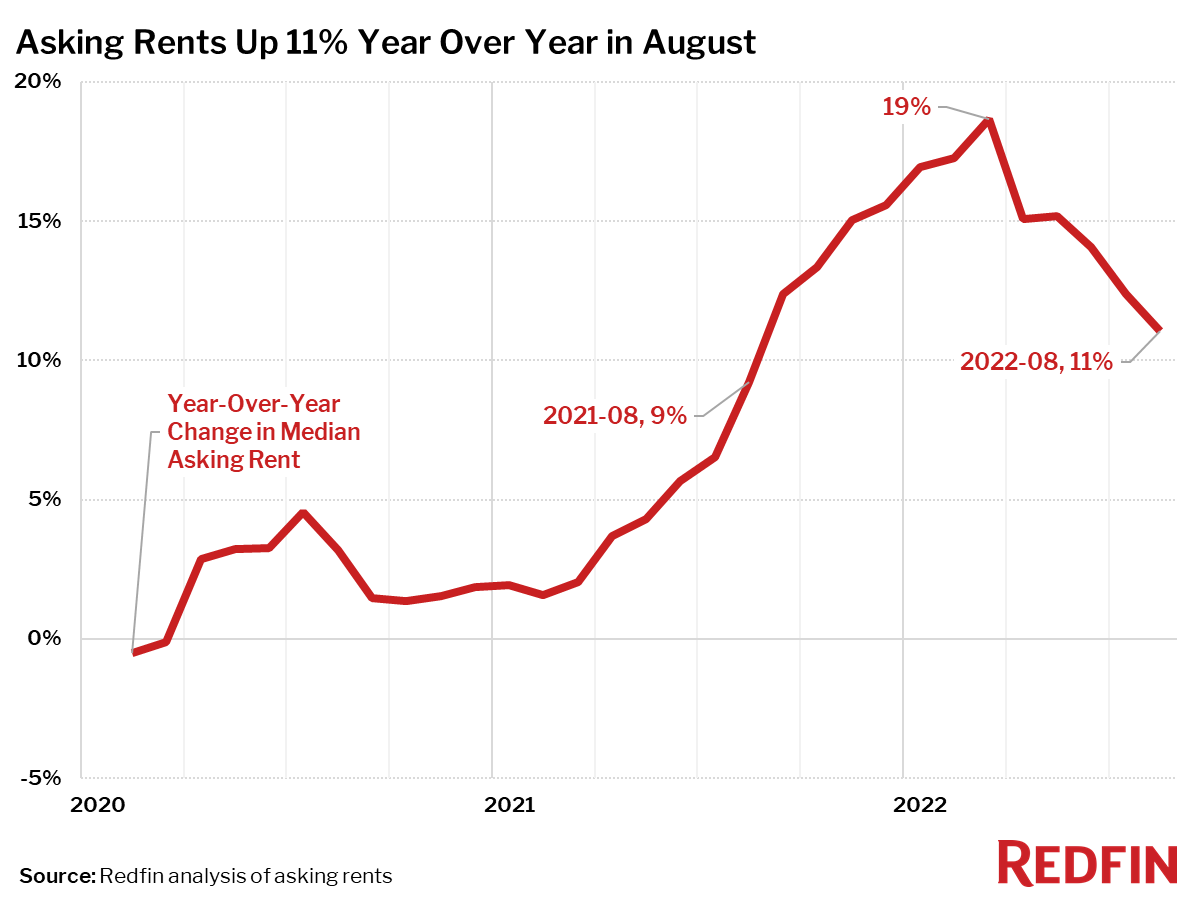U.S. asking rents climbed to a record high in August but rent growth moderated for the third-straight month. The national median asking rent was up 11% year over year to $2,039. That’s the smallest annual increase in a year, down from a peak gain of 19% in March. On a month-over-month basis, the median asking rent climbed 0.4%, the slowest growth since December 2021 and down from a 1.6% increase a year earlier.
“Rent growth will likely slow further as the Federal Reserve continues to raise interest rates. Higher interest rates impact the rental market because they put a damper on spending power in the economy as a whole, including renters’ budgets,” said Redfin Deputy Chief Economist Taylor Marr. ”Growth in rents is also likely to be slowed by a boost in rental supply. There are nearly a million rental units under construction that will hit the market in the coming months and years.”


In Cincinnati, asking rents rose 26% year over year in August, the largest jump among the 50 most populous U.S. metropolitan areas. Pittsburgh, Indianapolis and Nashville also saw increases of at least 20%. This was the first month since August 2021 that no metro area saw rents increase 30% or more from a year earlier.
Four of the 50 most populous metro areas saw rents fall in August from a year earlier, up from three in July. Rents declined 15% in Milwaukee, 7% in Minneapolis, 2% in Jacksonville, FL and 1% in Baltimore. Milwaukee and Minneapolis have seen declining asking rents since April.
Redfin analyzed rent prices from RentPath across the 50 largest U.S. metro areas. This analysis uses data from more than 20,000 apartment buildings across the country.
It is important to note that the prices in this report reflect the current costs of new leases during each time period. In other words, the amount shown as the median rent is not the median of what all renters are paying, but the median cost of apartments that were available for new renters during the report month. Currently, Redfin’s data from RentPath includes only median rent at the metro level. Future reports will compare median rent prices at a more granular geographic level.


